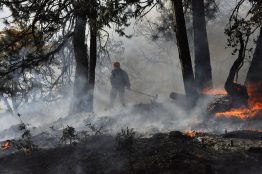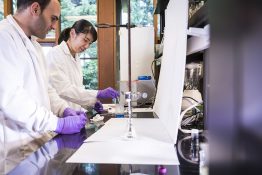As the natural world responds to climate change, American Indian tribes across the country are grappling with how to plan for a future that balances inevitable change with protecting the resources vital to their cultural traditions. The University of Washington Climate Impacts Group and regional tribal partners have developed a collection of resources that may be useful to tribes at any stage in the process of evaluating their vulnerability to climate change.
Read more at UW Today »Racial, ethnic minorities face greater vulnerability to wildfires
Environmental disasters in the U.S. often hit minority groups the hardest. When Hurricane Katrina slammed New Orleans in 2005, the city’s black residents were disproportionately affected. Their neighborhoods were located in the low-lying, less-protected areas of the city, and many people lacked the resources to evacuate safely. Similar patterns have played out during hurricanes and tropical storms ever since. Massive wildfires, which may be getting more intense due to climate change and a long history of fire-suppression policies, also have strikingly unequal effects on minority communities, a new study shows.
Read more at UW Today »Sockeye carcasses tossed on shore over two decades spur tree growth
For 20 years, dozens of University of Washington researchers have walked Hansen Creek — home to one of the densest sockeye salmon runs in Alaska’s Bristol Bay region — every day during spawning season, counting live salmon and recording information about the fish that died. After counting a dead fish — an inevitability here, either after spawning or in the paws of a brown bear — researchers throw it on shore to remove the carcass and not double-count it the next day.
Read more at UW Today »Policy pivot: A new emphasis on restoration to protect Puget Sound
In a growing region, protecting Puget Sound is about more than recovering certain species of threatened and endangered animals with marine protected areas. It’s also about protecting the livelihoods and diverse cultures of the people who live there and balancing their needs with the needs of the natural world. A team of University of Washington researchers and their collaborators tackled this quandary in a study spanning years and miles, across Puget Sound’s rural towns and urban centers.
Read more at UW Today »Harmful dyes in lakes, rivers can become colorless with new, sponge-like material
Dyes are widely used in industries such as textiles, cosmetics, food processing, papermaking and plastics. Globally, we produce about 700,000 metric tons of dye each year to color our clothing, eyeshadow, toys and vending machine candy. During manufacturing, a tenth of all dye products are discharged into the waste stream — most escape conventional wastewater-treatment processes and remain in the environment, often reaching lakes, rivers and holding ponds, and contaminating the water for the aquatic plants and animals that live there.
Read more at UW News »





